458th Bombardment Group (H)
Murder Unresolved
Sgt James Robert Murray
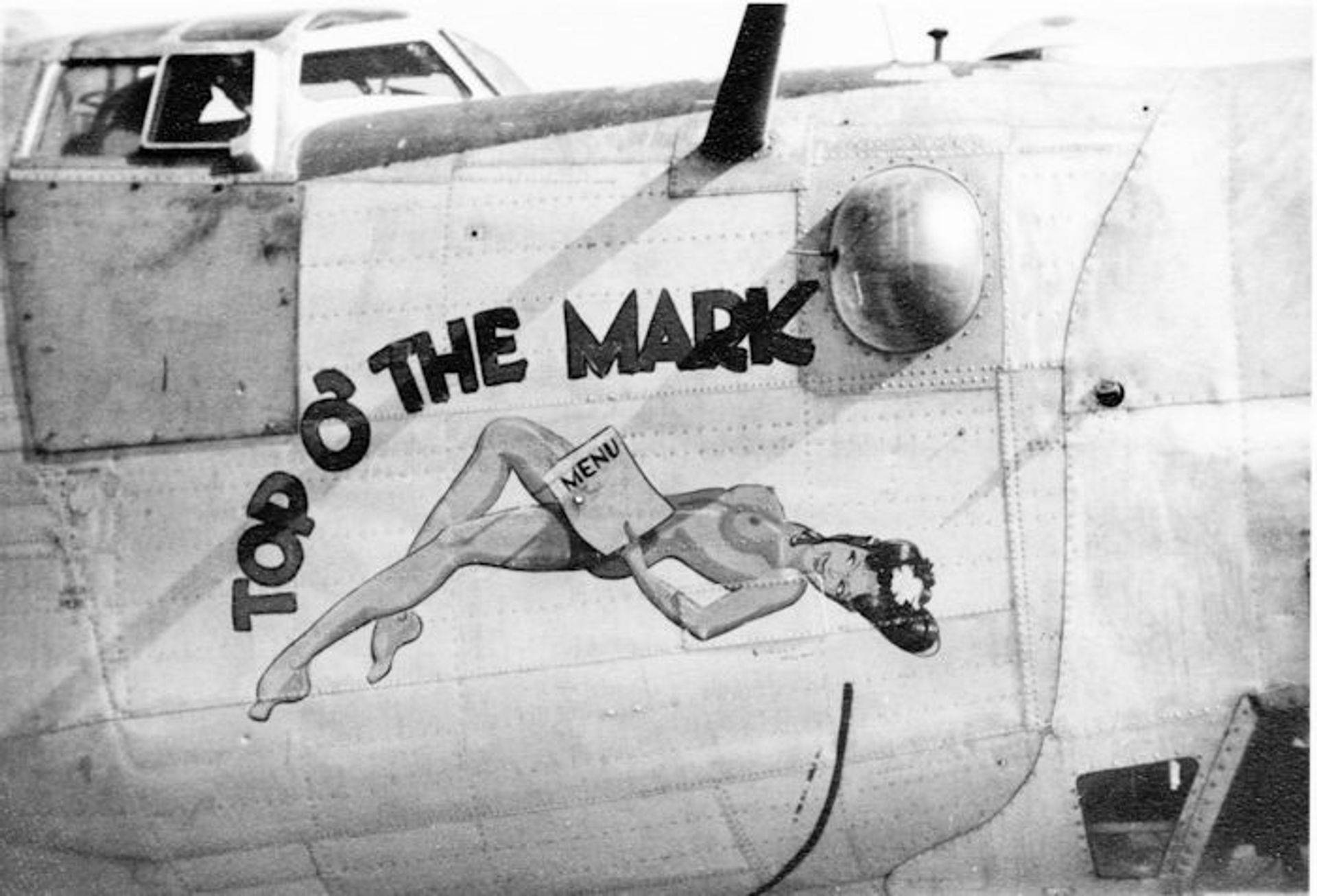
B-24H-25-DT 42-51110 7V Top O’ The Mark
The 458th Bombardment Group had war crimes inflicted upon members of two crews during the war. One incident occurred in February 1945 involving the crew of 2Lt William A. “Billy” Duke. Three members of this crew were murdered by German police after their aircraft was downed near Bieber, Germany. Several of the people who took part in, or ordered these killings were brought to justice after hostilities ceased. The other incident occurred nearly eight months earlier in June 1944. Unlike the culprits in the Duke crew killings, the murderer of Sgt James R. Murray was never brought to justice.
June 29, 1944
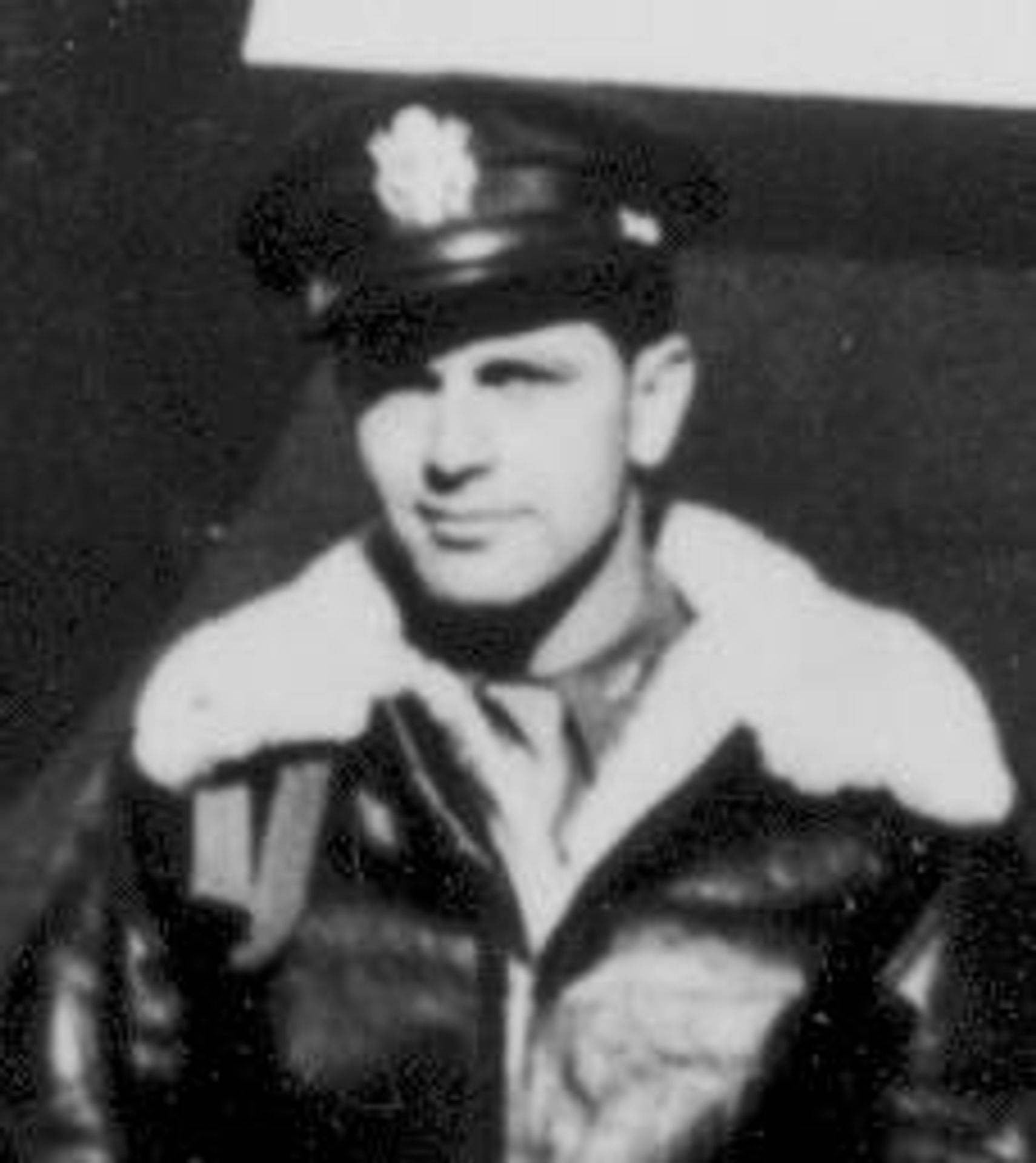
The 458th’s target for this date was the Junkers Airframe Factory near Aschersleben, Germany. This was the group’s 82nd mission and they managed to put 23 Liberators in the air. Of these aircraft, three aborted due to mechanical failure, leaving 19 planes to continue on to the target. Two B-24s were lost over the target, one piloted by 2Lt William P. Perkinson (755th) and the other piloted by 2Lt Charles B. Armour (754th). Of the 20 men who parachuted from these two bombers, 16 were captured and 4 evaded, eventually making their way back to England.
The B-24 Top O’ The Mark, piloted by 1Lt Kenneth M. Gorrell [pictured at left] was flying in the lead element. Gorrell was an original 752nd pilot who had crashed on takeoff on March 2, 1944 (the group’s first combat mission). Seven of the ten man crew was killed, with Gorrell, his radio operator and flight engineer being injured. Gorrell had only resumed flying missions on June 5th and this would be his 12th mission.
His crew was mostly comprised of members from two different crews who were making up missions in order to complete their tours. In addition, two crew members were relatively new to combat flying. Assigned to Gorrell for this mission was navigator 2Lt Milton M. Feldman (2Lt Theodore E. Haydon crew) and Sgt James R. Murray as nose turret gunner. Murray had been with the 752nd Squadron as an armorer (MOS 511) and had been reclassified as a gunner on June 20, 1944. It is not known for certain, but this may have been his first mission in that capacity. Top O’ The Mark also made it to the target before sustaining numerous flak hits. One of these bursts hit in the cockpit, setting the pilot’s oxygen system on fire.
According to a statement made by Gorrell:
“At about 0930 on 29 June 44 while on the bombing run attacking ASCHERSLEBEN, we received several flak hits, one of which started a fire in the Pilot’s oxygen system and spread over the left side of the cockpit. The CO2 Fire Extinguisher was used, but did no good. The fire was getting worse and it appeared that we would be unable to get it out, so the signal was given to prepare to abandon ship. The interphone system was out and the alarm bells in the tail and on the flight deck did not work and it is not known whether the bell in the nose compartment worked or not. We continued to work on the fire and finally managed to beat it out. At this point the Engineer made an inspection of the ship to see if there were any further damage or injuries to personnel. It wasn’t until then that we found out that the Navigator and Nose Turret gunner had bailed out. The waist gunners saw the two parachutes open, but did not realize at the time who it was. The rest of the crew was uninjured and returned with the ship to the base safely.”
Upon landing Lt Feldman was captured “between Bernburg and Calbe…” and spent the rest of the war in Stalag Luft III. After the war, he stated that it was his first time flying with this crew and that he had heard the bailout alarm. It is possible that this crew had a prearranged signal that consisted of using the alarm bell (maybe a short ring or two) to warn the crew to “prepare to abandon ship” (as stated by the pilot), and then a different use of the alarm bell, perhaps (long sustained ring) to tell the crew to actually jump. That is pure speculation, but it seems that whatever happened, this crew’s bailout procedure was not communicated to the navigator and the nose turret gunner. Feldman did not see Murray after reaching the ground.
On December 8, 1944 the Swiss Red Cross reported Sgt James R. Murray was killed in action on June 29, 1944 and was buried in the “cemetery at Muschlingen at Glothe, Germany.” The true fate of Sgt Murray was not known until well after the war. It was then, while Army investigators were trying to determine the whereabouts of U.S. airmen still reported as MIA that the truth about Sgt Murray came to light. A request for the status of Sgt Murray was made in March 1946, but investigators were hampered by the fact that Glothe lay in the Russian Zone of Occupation. While U.S. Graves Registration units were permitted to operate in this zone, their operational scope was limited.
Sgt Willard Middelkauf
In February 1946, Willard Middelkauf, gunner on Top O’ The Mark on June 29th, received a questionnaire from the Department of the Army asking for information on the status of his crew members from that date. The investigators had listed everyone on the aircraft, not realizing that Lt Feldman and Sgt Murray were the only ones missing. To compound matters further, Middelkauf had been shot down on August 9th while flying with his regular crew and spent the rest of the war as a POW, and had to answer separate questionnaires on that crew.
His account of the June 29th mission:
“At the time I was shot down over Germany, August 9, 1944, I was not flying with this crew. The reference made to the above crew must be of a mission I flew with this crew in June or July of 1944 to Aschersleben, Germany. On that mission we were badly shot-up by flak. The pilot’s oxygen control box was struck by a piece of flak, and the resulting flames that [enveloped ] the flight deck, plus the confusion and increased amount of altitude we were losing, influenced the nose-turret gunner Sgt James R. Murray 35274255, and our navigator 2nd Lt. Feldman, to bail-out. However, the pilot, engineer, and myself, succeeded in extinguishing the flames, and we made it back to our base in England, without our nose turret man and navigator. This action all occurred over the target, Aschersleben, Germany. We were all members of the 752nd SQ., 458th Bomb Gp., 8th Air Force.”
Investigation
In May of 1947, Major Albert C. Kalweit, Investigating Officer, submitted the following narrative to the Graves Registration Command office in Berlin:
“Contacted Willi Rusche, old Burgermeister, Otto Kretzschmar and Gustav Pflugmacher, cemetery caretakers, Otto Scmitt, Willi Gerz, Ernest Koch and Hermann Bertram, local citizens who are familiar with the circumstances of the burial of the U.S. fliers here. In the case of Sgt JAMES R. MURRAY information was received that he was taken prisoner and shot by a H. Schwenke, Amtsvorsteher [chief administrator]. A statement was obtained from an eye witness, Hermann Bertram of Glothe. The other people listed above were present when he made his statement and it was attested to by Gemeindevorsteher [community leader] Otto Kretzschmar. Sgt. MURRAY is the last of the crew of MACR G Vol. IV-314 to be located.”
STATEMENT OF WILLI RUSCHE
“I, Willi Rusche, was Burgermeister on 29 June 1944 in the community of Glothe and give herewith the following statement: When I went to my office on 29 June 1944, I saw in front of the Gemeindebuero a lot of people, what astonished me in the first moment. I asked what the matter is and got the answer: An American flier was trapped and shot here in the cellar. When I entered the Hall, the Dr. Hallensleben came upstairs from the cellar and when I asked him what the matter is, he told me that the man has died already. I went in the cellar and met the Amtsvorsteher Schwenke and some civilians inside. I saw the dead flier lay on the ground. Then I went to my office for work. Then I talked with the Amtsvorsteher Schwenke about the burial and I got the answer: It is not your business, I will do that. I showed the place of burial to the cemetery caretaker, all other formalities reserved Schwenke for himself due to his duty as Amtsvorsteher. At my suggestion a Wermacht unit came here 14 days after the burial to give the last military honors. All valuables and identification tags were brought to the airport of Koetnen by the cemetery caretaker Pfugmacher.”
QUESTIONNAIRE OF GUSTAV PFLUGMACHER
Gustav Pflugmacher, cemetery caretaker, told Graves Registration investigators that he personally buried Sgt Murray, and that he was the only American interred in the cemetery. When asked for the “condition of the American when buried”, he stated, “shot”. He told investigators that, “In June 1945 American officers were here, I had to disinter the soldier, to open the coffin. He was examined and photographed. Then the grave was covered again.”
STATEMENT OF HERMAN BERTRAM
“I, Herman Bertram, farmer, live in the community Uellnitz, give the following statement: On the 29-6-44 I was on the field in the south of the village of Uellnitz, as Herr Schwenke passed me with an American prisoner. Some civilians were with them. Herr Schwenke told me to accompany him. In Glothe we brought the prisoner in the cellar of the community office. The window was open, so Herr Schwenke shut it. After this, I found my work finished and turned to the door. Suddenly I heard a shot, and as I turned to the prisoner he laid on the earth. He attempted to get up as the second shot came. I supposed that the flier was dead, and went out of the cellar. Then I went home.”
It wasn’t until 1948 that a team was able to retrieve the remains of Sgt Murray:
“On the 14th January 1948 at 1445 hrs the undersigned along with disinterring team #2 and Russian escort officer Lt. Repenko, disinterred from the civilian cemetery of Gloethe, Germany the remains of one (1) American deceased. The remains were buried in a coffin, in a single grave marked with a wooden cross which bore the following inscription, ‘James R. Murray – 29.6.1944’. Remains were in bad condition and clothed in flying suit. No identification found upon disinterment.” – S/Sgt Raymond H. Stoudt, Disinterring NCO
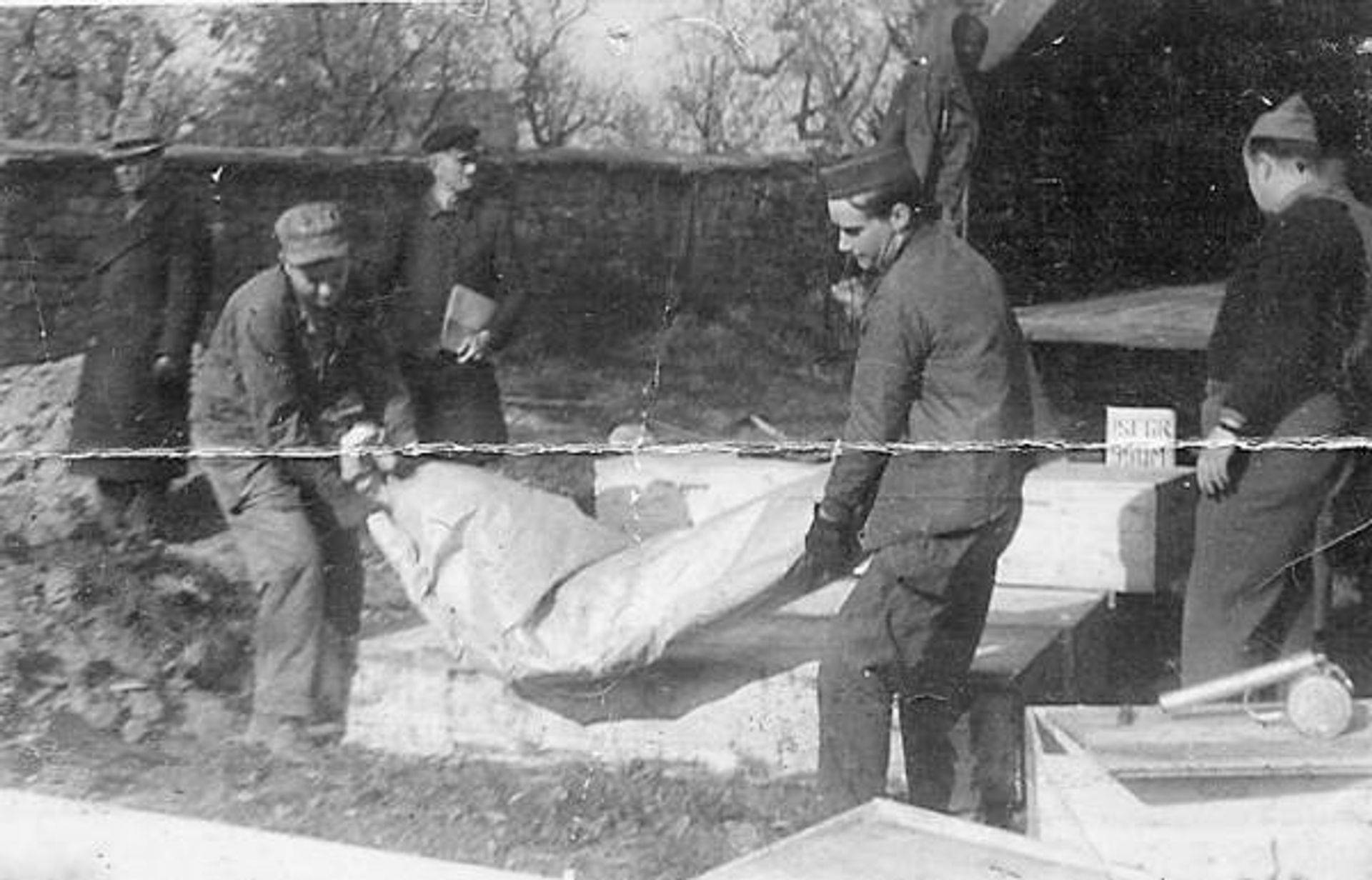
S/Sgt Stoudt (far right) supervises the removal of American remains from a German cemetery
Photo: Raymond H. Stoudt, Jr
The cemetery records showed his name and serial number and that he was an “American pilot”, since the body had been buried without identification tags, a long process had to be undertaken to ensure that this was in fact Sgt Murray. An autopsy was performed, during which all the evidence was studied and a detailed tooth chart was made. It was also determined that the cause of death was two gunshot wounds with a pistol. After it was determined that he was murdered, all of this information was sent to the war crimes unit. While it was strongly believed that this was Sgt Murray, positive proof had not yet been made. In February 1948, the remains were sent to the United States Military Cemetery Neuville-en-Condroz, Belgium, designated X-7152, and buried in Plot-FF, Row-9, Grave-210.

1946: The temporary cemetery at Neuville-en-Condroz (Belgium)
It was not until January 18, 1949, using dental charts, hair color, and additional evidence gathered in Germany that the remains were positively identified as those of Sgt. Murray. The process was then begun to contact his next of kin and bring him home. On June 6, 1950, almost six years after his murder, Sgt Murray’s casket was received in Canton, Ohio and buried two days later at the Forest Hill cemetery.
War Crime
It would be a fitting end to this tragic incident to report that the war crimes unit was able to capture Werner Schwenke and bring him to justice. Unfortunately such is not the case. War Crimes Case 12-1819 appears to have been opened in September 1945 after the capture of Herman Bertram who was a member of the Home Guard.
WAR CRIMES SUMMARY
“On or about 29 June 1944, an American aviator parachuted to the ground in the vicinity of LOBNITZ, Germany. He surrendered to German nationals who turned him over to Werner Schwenke, Ortsgruppenleiter, and Herman BERTRAM, a farmer and member of the home guards. They took him to GLOTHE where he was shot and killed. Only SCHWENKE and BERTRAM were present at the time of the murder. The latter, who is in custody, states that SCHWENKE is responsible for the murder. SCHWENKE, in his official report, states that both of them fired. The body of the victim is buried in the cemetery at said GLOTHE. There is testimony in the file by Doctor Albert HALLENSLEBEN who examined the victim right after the shooting as to the cause of death.
“Werner SCHWENKE, Ortsgruppenleiter, has not yet been apprehended. A Wanted Report has been forwarded to CROWCASS (Central Registry Of War Criminals And Security Suspects ) on him. Herman BERTRAM, a former member of the home guards, is in custody of the Seventh United States Army. The file does not disclose where he is held. A Wanted Report has been forwarded to CROWCASS on him.”
Milton Feldman
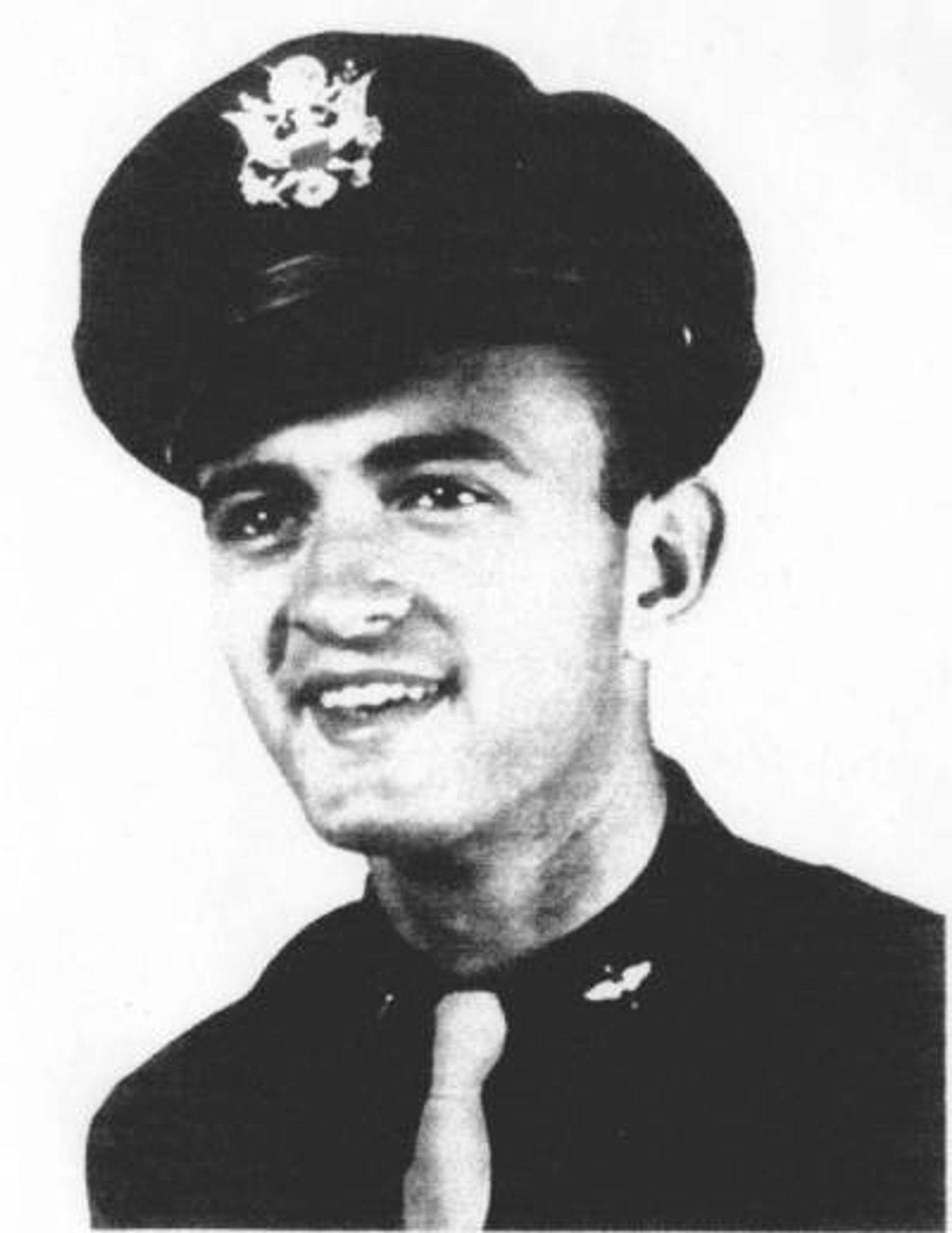
Major Clarence Yancy of this unit also contacted Milton M. Feldman, now home in New York, in the hopes that he could provide additional information about Sgt Murray, but he was not even aware that a crime had been committed.
5 January 1946
Dear Mr. Feldman:
The records of this office reveal that you may have knowledge of the fate of an American Sergeant who parachuted to the ground on or about 29 June 1944, in the vicinity of Lobnitz (Glotche), Germany. It appears that the aviator was brutally murdered by the Germans.
Please furnish this office with a detailed statement of all the facts withing your knowledge concerning the fate of this American aviator.
A self-addressed penalty envelope, which requires no postage is enclosed herewith for your convenience in reply.
9 January 1946
Gentlemen:
I have very little information to offer you with regard to the murder of the other flier who bailed out with me on 29 June 1944. After we bailed out, I neither saw nor heard from him again. Your letter is the first time that I’ve heard that he was murdered.
As a matter of fact, that mission was the first time I flew with him and I didn’t even get to learn his name before we left the ship. On the other hand, my capture by the Germans was effected near Bernburg with all due civility. Compared to the fate of other fliers, I was extremely lucky. I wish I could be of more assistance, but I just never heard of him after we bailed out.
Sincerely yours,
Milton M. Feldman
Milton Feldman Corrspondence
(Photo: Ellen Thorp)
Sgt James Robert Murray
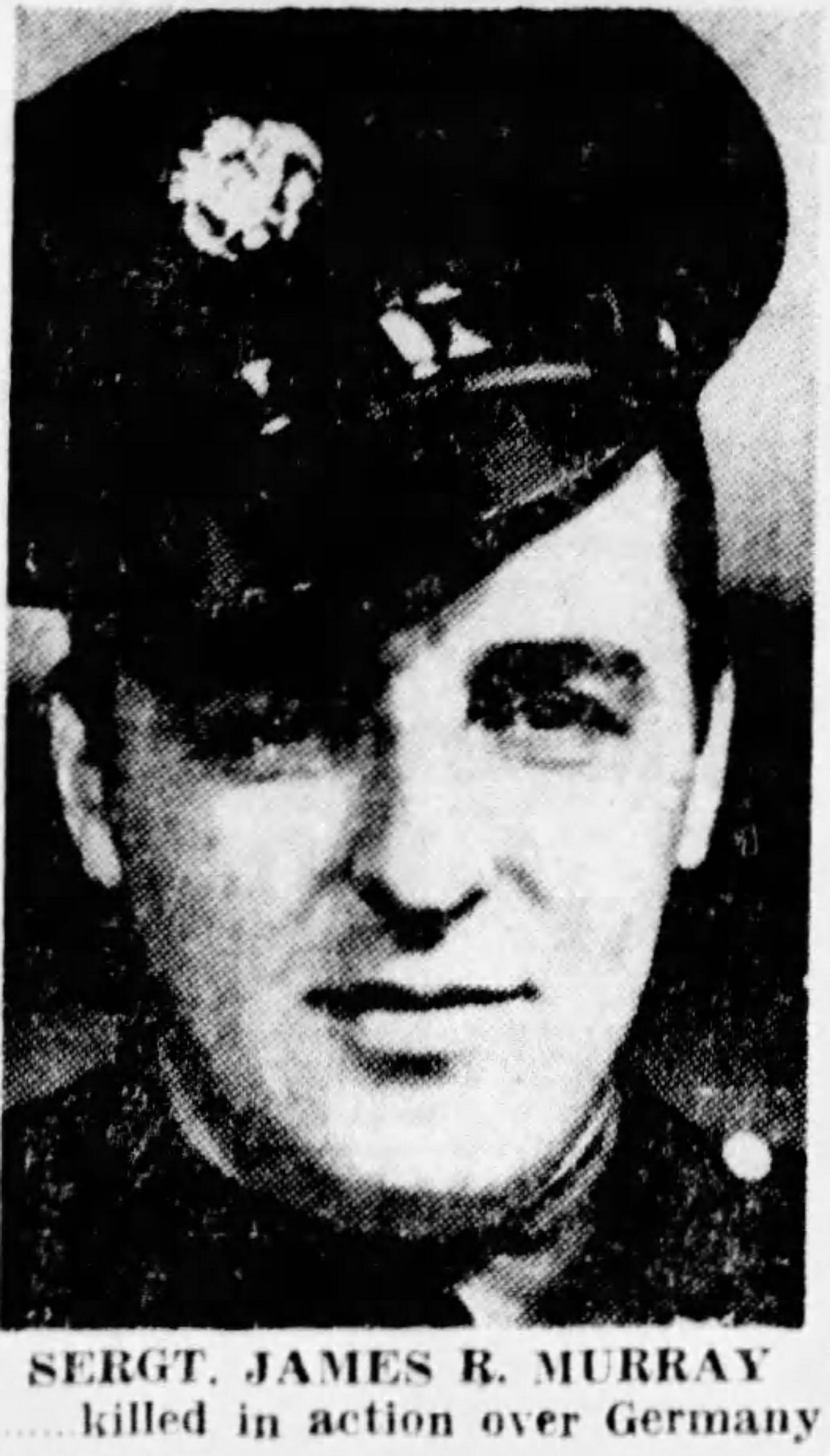
Update: September 12, 2023
A search on Find-A-Grave revealed a photo of Sgt Murray, as well as his obituary. The article is undated, but is presumably from December 1944 when the family had been notified that he was killed in action.
Sgt. James R. Murray
Previously reported missing over Germany, Sgt. James R. Murray was killed June 29 according to a message received Thursday from the war department by his widow, Mrs. Freda Murray, and his mother, Mrs. Grace Gatchet, both of 3838 Fairmount Blvd NE.
Sgt. Murray, 24, a gunner on a bomber, had been in service since Feb. 3, 1942, and based in England since December of that year. He trained at F. Eustis, Va., and Mitchel Field, Long Island. He was a former employee of Republic Steel Corp.
Surviving in addition to his widow and mother, are two sisters, Miss Gladys Mae Murray of Burbank, Calif., and Mrs. Evelyn Snyder of Canton; one brother, D. V. Murray of Massillon, and two stepbrothers, James L. Gatschet of Canton and Carl Gatschet of Cincinnati.
Case Unresolved
The entire war crimes report is only nine pages long, and nothing suggests that Werner Schwenke or Herman Bertram were ever brought to trial for the murder of Sgt Murray. Despite efforts to obtain additional documentation and to find a conclusion to this case I have been unable to locate any further information on either the perpetrators of the crime or the victim. I have also been unable to locate the family of James R. Murray. It would be fitting to have a photograph of him on this website. As this report shows, at the time of his death Murray’s wife Freda, his mother Grace Gatschet, and sister Evelyn Snyder were all living in Canton, Ohio. If anyone has any further information on this incident or individuals involved, please reach me through the Contact Page of this website.
